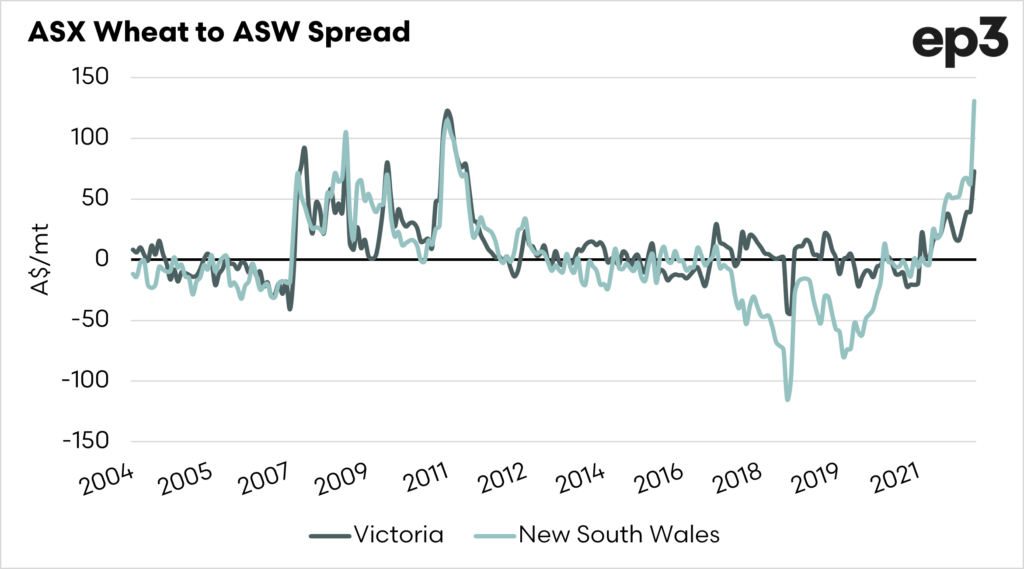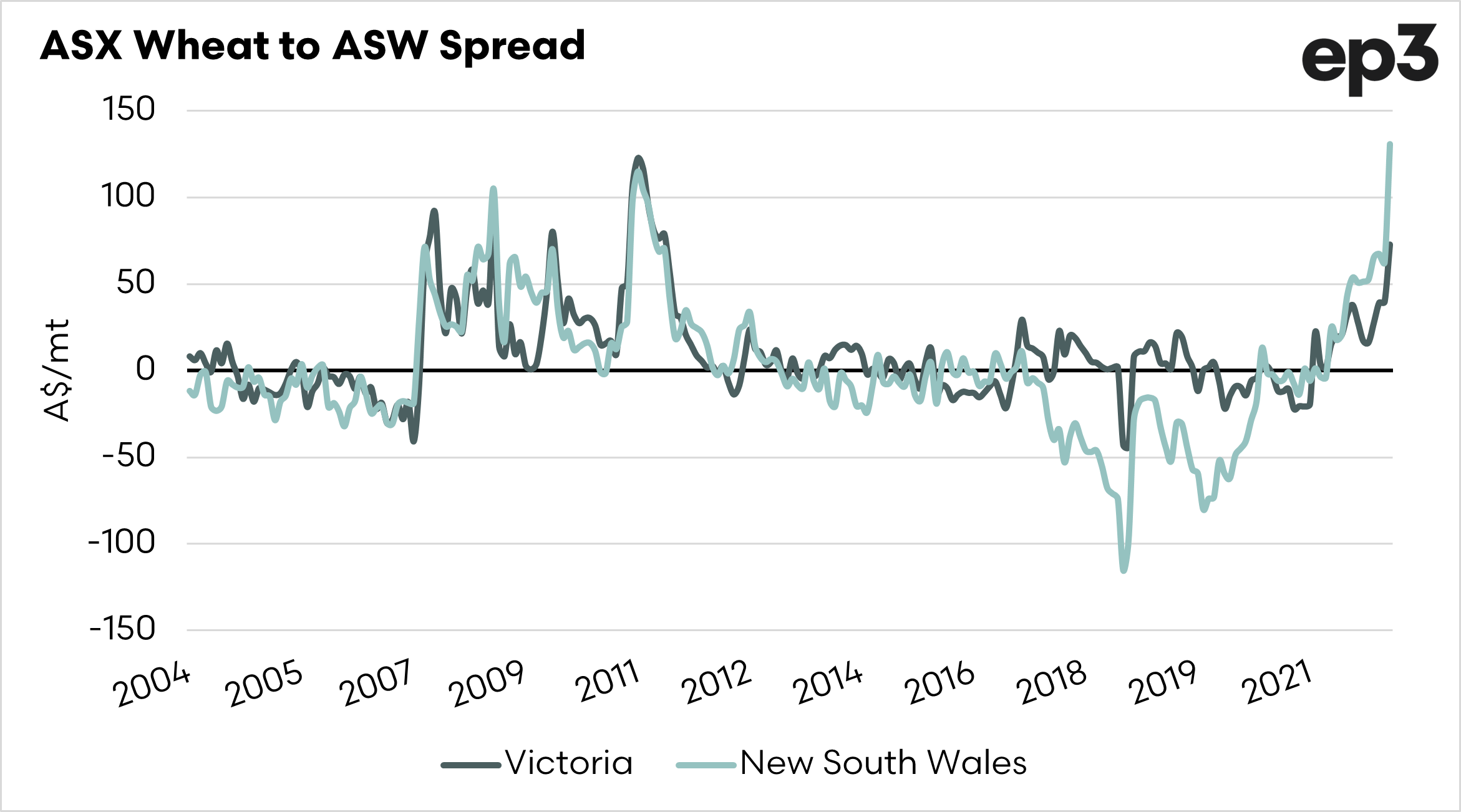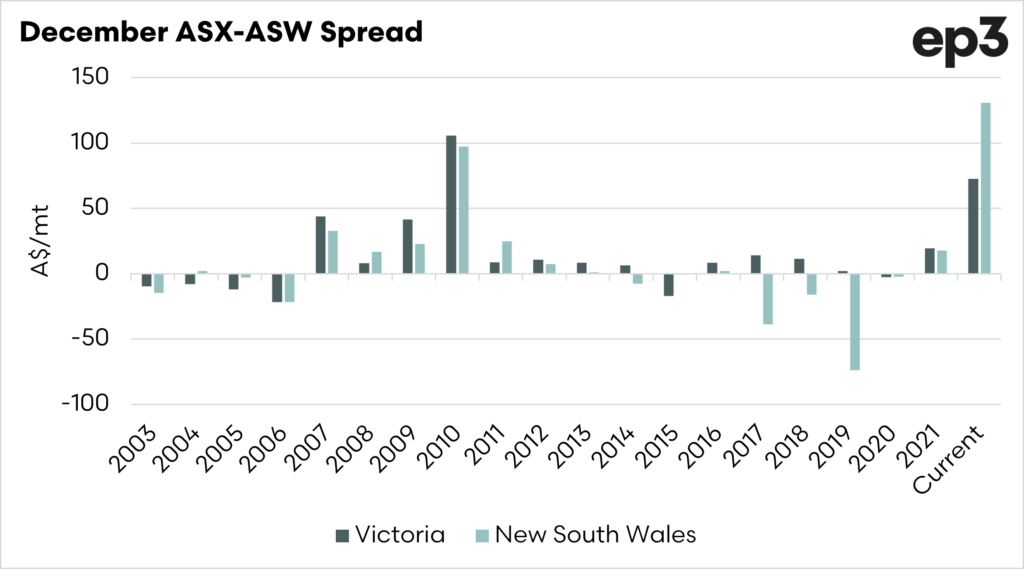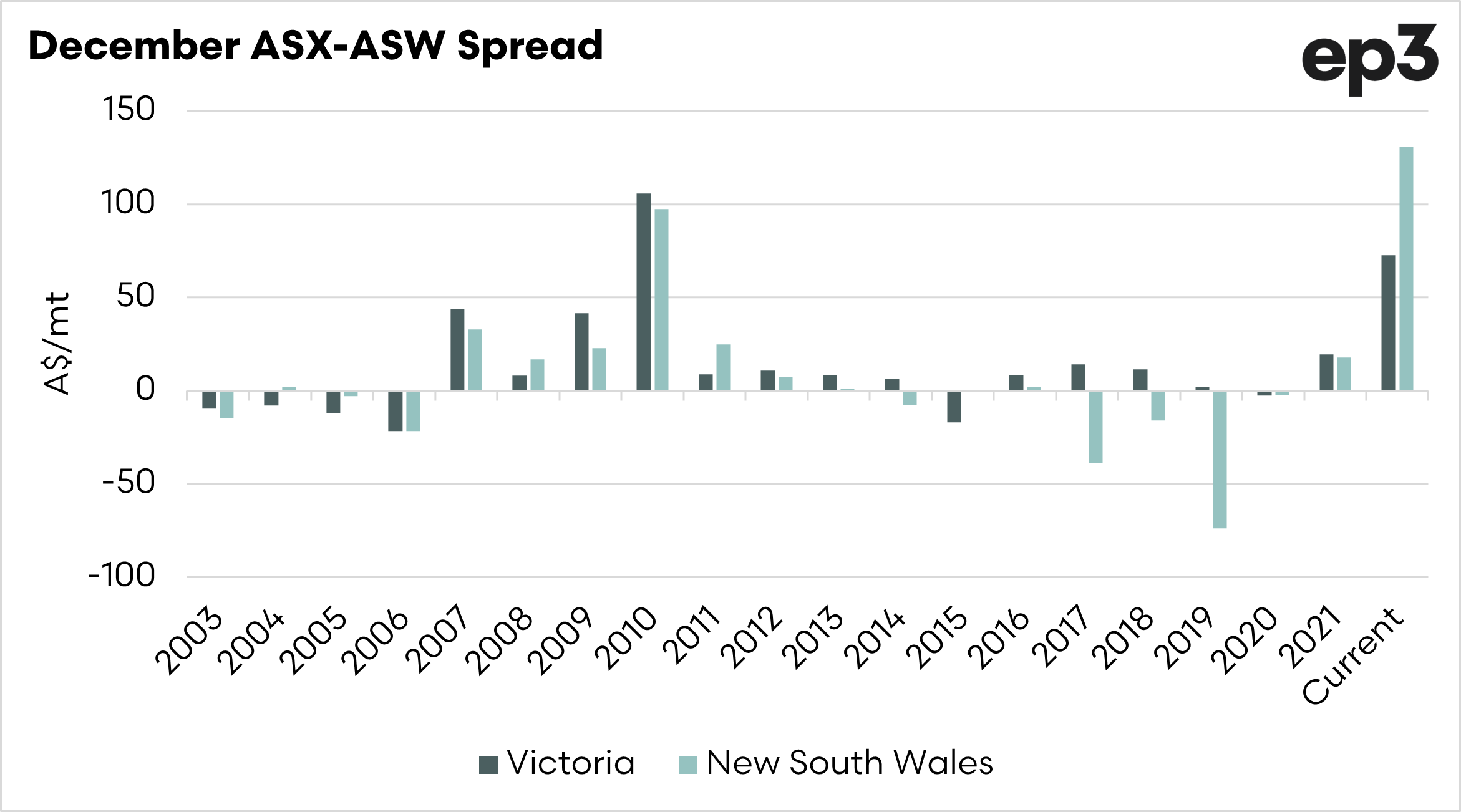Why does it always rain on me?

The Snapshot
- Moist conditions have continued to prevail across parts of the eastern states.
- Many areas have been inundated, and those in floodplains have seen entire crops submerged.
- The moist finish of the season will lead to lower protein levels.
- This will lead to an abundance of lower grade wheat, decreasing available high protein wheat as a percentage of the corp.
- The discount from milling grades to feed will be large this season.
The Detail
The rain in Australia falls mainly on the grain. Recent weeks have seen big downpours throughout the eastern states. This has caused many problems with roads washed out and, ultimately, crops under water.
It’s unfortunately not over yet (see here)

The wet weather is already at the point where it will cause the crop’s condition to fall. I’m not an agronomist, and I generally like to stay in my lane as a market analyst. In layperson’s terms though, a wet finish will lead to reduced protein levels and therefore downgrading from milling wheat.
To give an indication of what is likely to happen with such a moist finish, we have to look towards the past.
The ASX wheat contract is a minimum APW1 grade contract. I have chosen to display the spread between ASW and ASX going back to 2004, as a monthly average.
The largest peak in ASX premium over ASW was in late 2010.
What happened in 2010? At that time, I was based in Western Australia, working for Cargill at the time. It holds a lot of memories for me, as it was my first year in Australia.
Western Australia was going through a terrible drought, but the east coast was struggling through a period of incredible moisture. At the time, it was Australia’s second-wettest year on record

The chart below shows the spread between ASX and ASW, but only for the month of December. The spread blew out in 2010, but why?
It is just basic economics – supply and demand. The trade now has to battle with a huge influx of ‘lower’ quality wheat which will largely be destined for feed markets.
A big supply of lower protein wheat makes the discount increase as the trade looks to get hold of whatever high protein is available for the milling industry.
This is already starting to occur, with current discounts to ASW growing dramatically.
The big focus from many farmers will be just getting it out of the paddocks; then it will be assigning contracts. Those with fixed-spread multigrade contracts will want to be careful when assigning their contracts.
At present, we expect that discounts will be large this season on the east coast especially.




